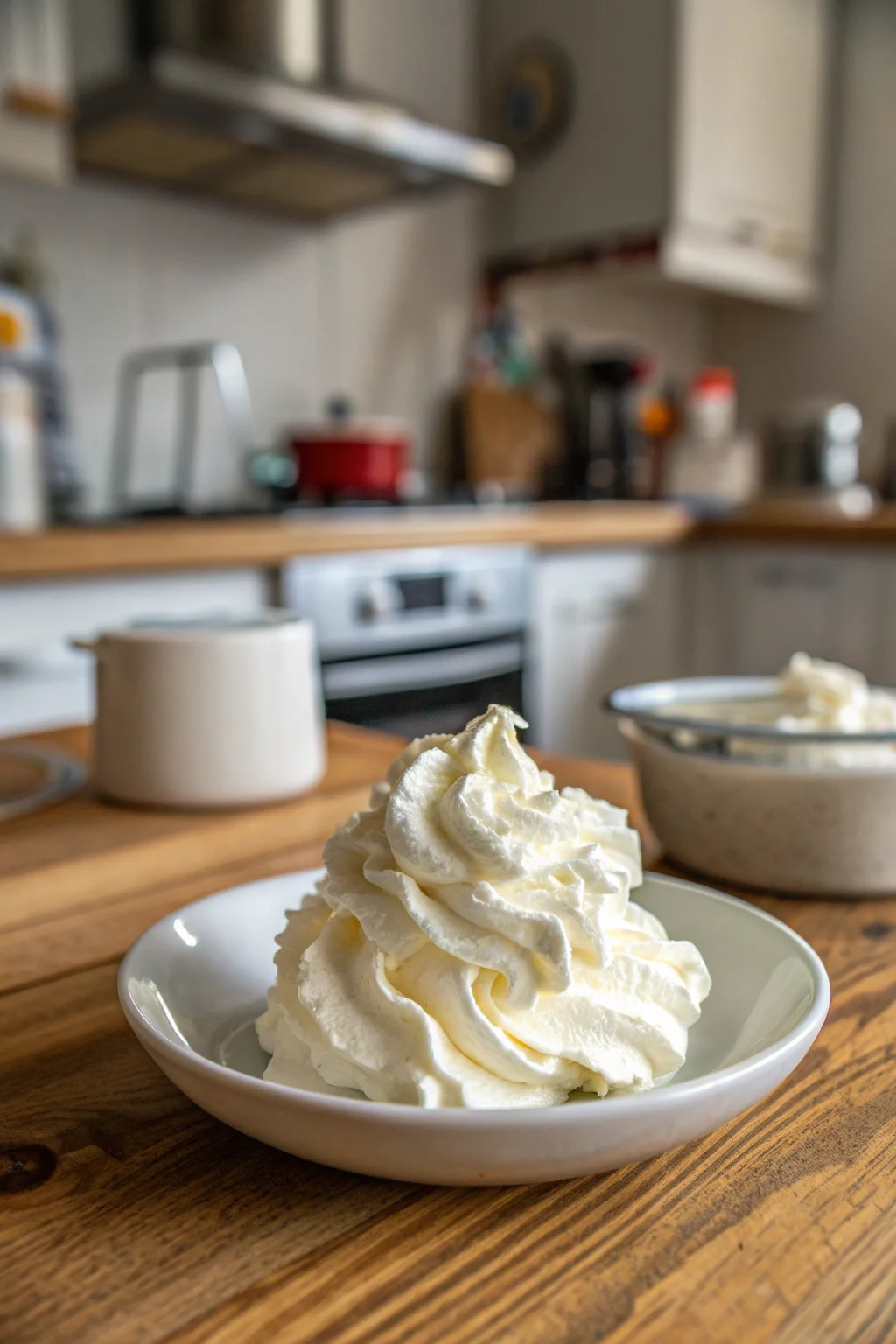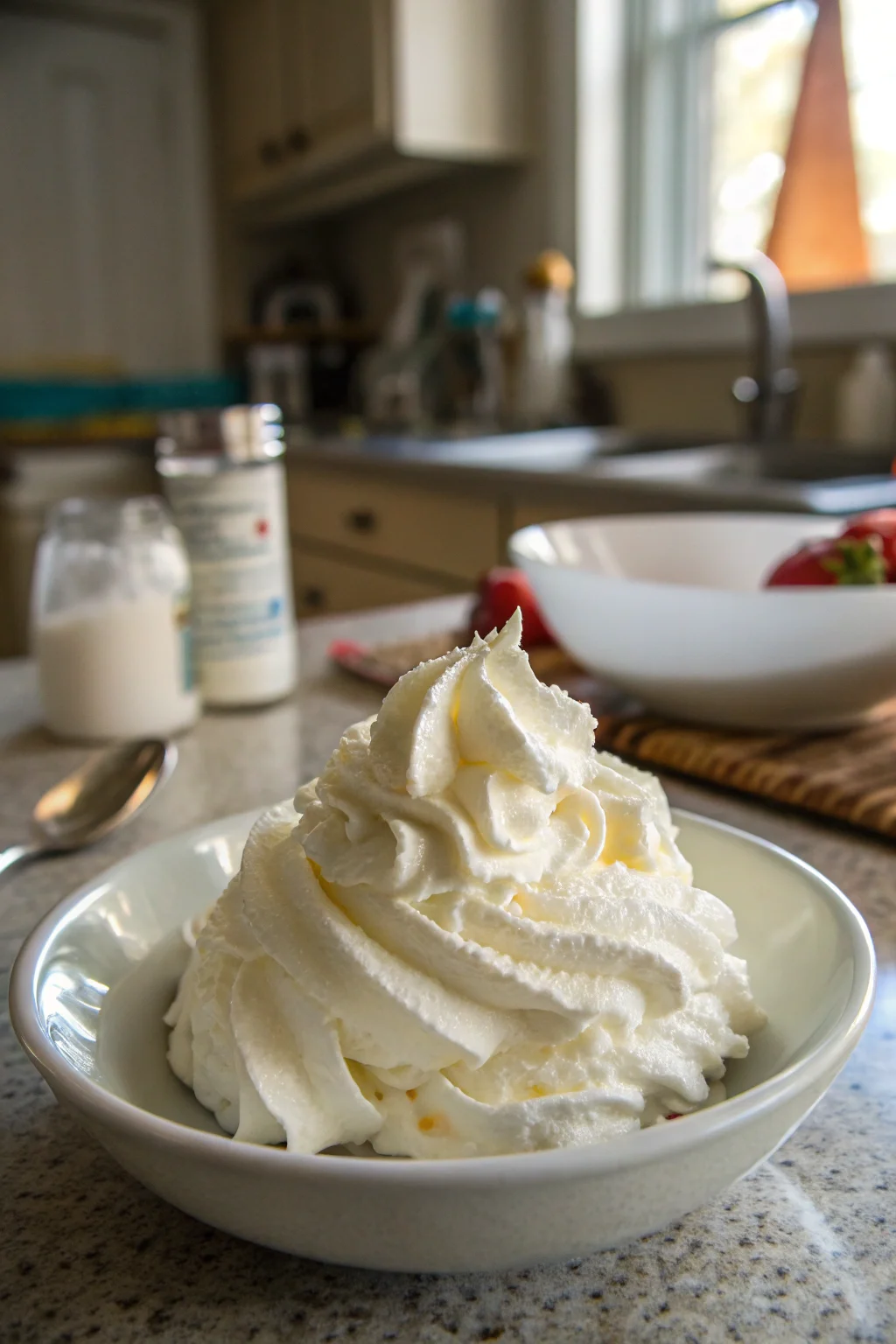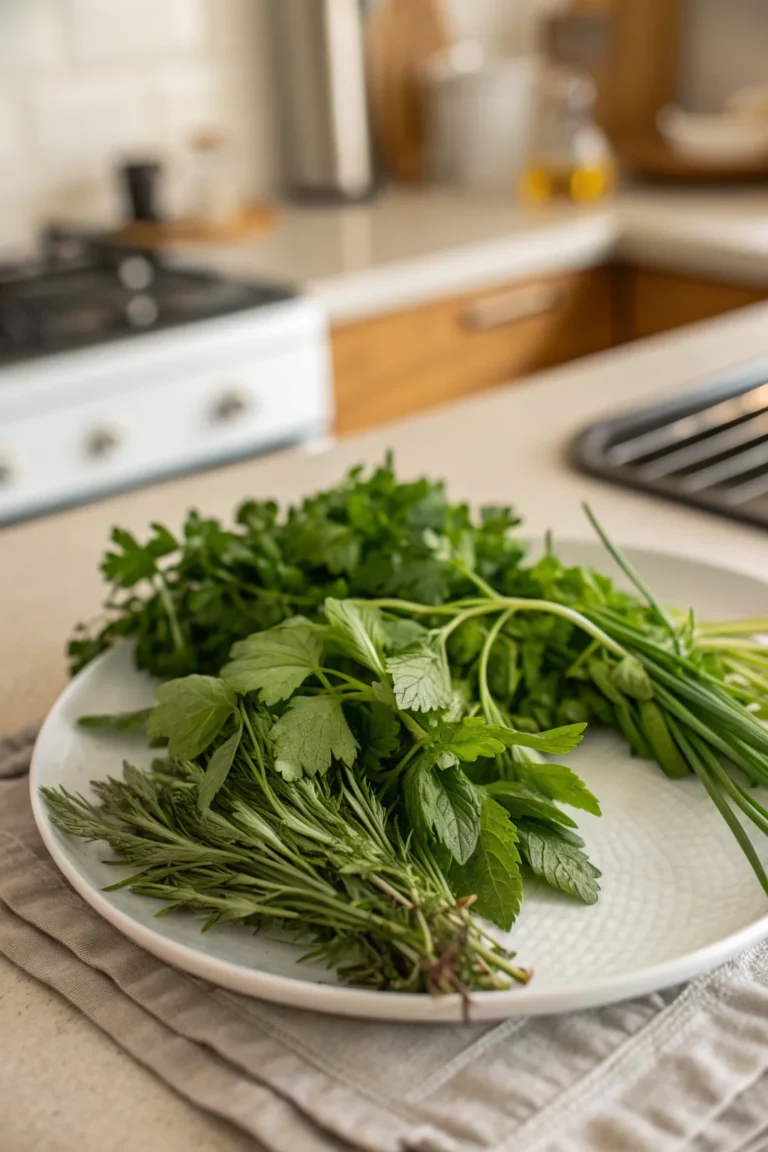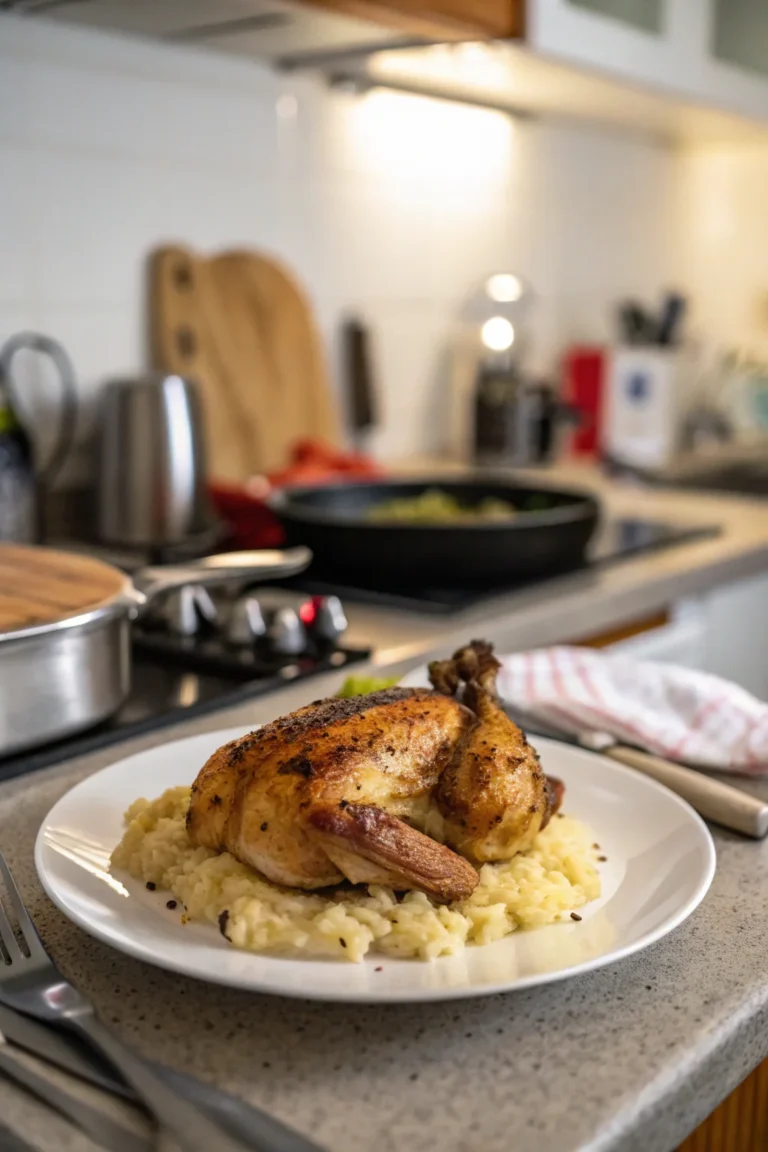How to Make Homemade Whipped Cream | Simple Recipe
Homemade whipped cream is a delightful addition to desserts, drinks, and breakfast dishes. It’s incredibly easy to make with just a few ingredients, and it tastes far superior to store-bought versions. Whether you’re topping a pie or adding a dollop to hot chocolate, learning how to make your own whipped cream is a skill worth mastering. In this guide, we’ll cover everything you need to know to create perfect whipped cream every time.
Table of Contents
What Ingredients Do I Need to Make Homemade Whipped Cream?

To make homemade whipped cream, you’ll need just a few basic ingredients:
Heavy Cream: Choose heavy cream or heavy whipping cream with at least 36% milk fat for the best results. The high-fat content is crucial because it provides the richness and structure needed for the cream to aerate and hold its shape. Lower fat content alternatives like half-and-half or milk won’t whip.
Sugar: Granulated sugar works well, but powdered sugar can also be used for a smoother texture. Powdered sugar contains a bit of cornstarch, which can help stabilize the whipped cream slightly, making it an excellent choice if you want your whipped cream to last longer.
Vanilla Extract: Adds a pleasant flavor; you can also use other extracts like almond or peppermint for variation. Vanilla extract is the classic choice for most whipped creams, but experimenting with different extracts can create exciting flavor profiles. Almond extract offers a nutty undertone, while peppermint can add a refreshing twist perfect for holiday desserts.
Optional ingredients include:
Stabilizers: Such as gelatin or cornstarch, to help maintain the texture if the whipped cream won’t be used immediately. Stabilizers are especially useful if you’re planning to pipe the whipped cream onto cakes or cupcakes in advance.
Flavor Variations: Consider adding cocoa powder for chocolate whipped cream or citrus zest for a fresh twist. Cocoa powder can transform your whipped cream into a luscious chocolate topping, perfect for chocolate cakes or mocha drinks. Citrus zest, on the other hand, pairs beautifully with fruit-based desserts, adding a zesty brightness that complements the cream’s richness.
What Equipment Do I Need to Make Whipped Cream?
For making whipped cream, you’ll need:
A Mixing Bowl: Preferably stainless steel for better temperature retention. A cold bowl helps the cream to emulsify faster, leading to a quicker whip and a more stable end product.
Whisk or Electric Mixer: A hand whisk works, but an electric hand mixer or stand mixer speeds up the process. If using a hand whisk, choose a large balloon whisk for maximum aeration. An electric mixer can save time and effort, especially if you’re whipping large quantities.
Chilled Equipment: Chill your bowl and beaters in the freezer for about 15 minutes before starting to help the cream whip faster. Cold equipment ensures the fat in the cream remains solid, which is crucial for trapping air and creating light, fluffy peaks.
Having these items ready will ensure a smooth and efficient whipping process. Ensuring that your tools are well-prepared can make a significant difference in the quality and consistency of your whipped cream.
How Do I Prepare the Cream for Whipping?
Preparation is key for successful whipped cream. Follow these steps:
Chill Your Equipment: As mentioned, chilling your bowl and whisk or beaters helps the cream whip up more quickly. This step is particularly important in warm environments where room temperature can soften the cream before it reaches the desired stiffness.
Measure Ingredients: Measure 1 cup of heavy cream, 2-3 tablespoons of sugar, and 1 teaspoon of vanilla extract. Adjust the sugar content to your taste; less sugar creates a more subtly sweet cream, while more sugar can mimic the sweetness of store-bought varieties.
Start Whipping: Pour the heavy cream into your chilled bowl. Begin whipping on a medium speed until the cream starts to thicken. Starting at a lower speed helps prevent splatters and allows you to monitor the cream’s progress more closely.
This preparation ensures you achieve the perfect texture and flavor. Taking these steps ensures that your whipped cream has the right balance of sweetness and flavor, and that it whips up to the perfect consistency.
How Long Should I Whip the Cream?
The duration depends on your desired consistency:
Soft Peaks: Whip for about 3-4 minutes. The cream should hold its shape but still be soft. Soft peaks are ideal for topping beverages like hot chocolate or coffee, where you want the cream to slowly meld into the drink.
Medium Peaks: Continue for another minute. The peaks will be firmer but still smooth. Medium peaks work well for dolloping on desserts like pies or puddings, as they hold their shape without being too stiff.
Stiff Peaks: Whip for an additional 1-2 minutes. The cream should stand up straight but not appear dry. Stiff peaks are perfect for piping onto cakes or cupcakes, offering clean, defined shapes.
Monitor closely to avoid over-whipping, which can turn the cream into butter. Over-whipping occurs when the cream loses its smoothness and starts to look grainy. If this happens, add a small amount of fresh cream and gently fold it in to rescue the texture.
Can I Make Whipped Cream Without an Electric Mixer?

Yes, you can make whipped cream by hand using a whisk:
Chill Everything: Ensure your bowl and whisk are cold. This helps in achieving the desired consistency faster and with less physical effort.
Whisk Vigorously: Use a large balloon whisk for the best results. Whisk rapidly in a circular motion. The key is to incorporate as much air as possible into the cream quickly.
Time and Effort: This method takes about 10-15 minutes of consistent whisking. It’s a great arm workout! While it takes more effort, using a whisk allows for greater control over the final texture and can be a satisfying, hands-on way to make whipped cream.
Making whipped cream by hand is a rewarding process, though it requires patience and energy. It’s a great technique to have in your culinary arsenal, especially when electric tools aren’t available.
How Can I Stabilize Whipped Cream?
Stabilizing whipped cream helps it hold its shape longer. Here are some methods:
Gelatin: Dissolve 1 teaspoon of unflavored gelatin in 2 tablespoons of water, then warm until melted. Cool slightly and add to the cream during whipping. Gelatin is an excellent stabilizer if you’re making whipped cream well in advance or for a layered dessert that requires structure.
Cornstarch: Mix 1 tablespoon of cornstarch with the sugar before adding to the cream. Cornstarch is easy to use and helps the whipped cream maintain its texture without affecting flavor.
Cream of Tartar: Add 1/4 teaspoon to the cream as you begin whipping. Cream of tartar acts as a stabilizer and is particularly useful if you’re making meringue-topped desserts.
These methods are useful if you’re preparing whipped cream in advance or for warm environments. Stabilized whipped cream can last several hours without deflating, making it ideal for parties or events where desserts are served over a prolonged period.
How Do I Add Flavor to Whipped Cream?
Enhance your whipped cream with various flavors:
Extracts: Besides vanilla, try almond, peppermint, or coconut extract. Each extract offers a unique flavor profile that can enhance the overall taste of your dessert.
Citrus Zest: Grate a small amount of lemon, lime, or orange zest for a fresh taste. The oils in the zest add a burst of flavor that pairs especially well with berry desserts or citrus cakes.
Spices: Cinnamon or nutmeg can be whisked in for a hint of spice. These spices add warmth and depth to the whipped cream, making it a perfect accompaniment for fall desserts like apple pie.
Experiment with these additions to complement your dishes perfectly. Adding flavors allows you to tailor the whipped cream to suit different desserts, offering a personalized touch to your culinary creations.
Can I Use Whipped Cream as a Frosting?
Yes, whipped cream can be used as a light frosting:
Stabilize: It’s best to use stabilized whipped cream for frosting to maintain structure. This ensures that your frosting holds up well even in slightly warmer temperatures.
Apply Carefully: Use a spatula to spread gently, or pipe it for decorative designs. Whipped cream is softer than buttercream, so it requires a gentler touch to prevent deflation.
Serve Soon: Whipped cream frosting is best served immediately or kept chilled to avoid melting. While it’s not as stable as traditional frostings, its lightness can be a delightful contrast to rich cakes and pastries.
Whipped cream is ideal for cakes, cupcakes, and other desserts that benefit from a light, airy topping. Its subtle sweetness and fluffy texture make it a popular choice for those who prefer less sugary frostings.
How Do I Store Homemade Whipped Cream?
To store homemade whipped cream:
Refrigerate: Place in an airtight container and refrigerate for up to 2-3 days. It’s important to keep it cold to maintain its texture and prevent spoilage.
Re-whip: If it loses volume, give it a quick whisk before using. This can help restore some of its fluffiness after it has been sitting for a while.
Avoid Freezing: Freezing can alter the texture and make it grainy. The ice crystals that form during freezing break down the structure of the cream, resulting in a less desirable texture upon thawing.
Proper storage ensures your whipped cream stays fresh and delicious. Keeping it in the coldest part of your fridge, away from the door, can help maintain its quality.
What Desserts Pair Well with Whipped Cream?
Whipped cream is a versatile addition to many desserts:
Pies and Tarts: Classic pairings like pumpkin pie or lemon tart. The cream’s richness balances the tartness of fruit-based desserts and the spiciness of pumpkin pie.
Cakes and Cupcakes: A light topping for any cake or cupcake. Its airy texture complements dense cakes like chocolate or banana bread, adding a lovely contrast.
Fruit: Complements fresh berries or fruit salads beautifully. The cream enhances the natural sweetness of fresh fruits, making it a perfect topping for summer desserts.
Explore more dessert ideas in our Dessert Recipes section. Whipped cream’s versatility allows it to pair well with a variety of sweet treats, enhancing their flavors and presentation.
Can I Make Dairy-Free Whipped Cream?
Yes, dairy-free alternatives exist:
Coconut Cream: Chill a can of full-fat coconut milk, scoop out the solidified cream, and whip as you would dairy cream. Coconut cream offers a similar texture and can add a subtle coconut flavor, making it a great option for tropical desserts.
Aquafaba: The liquid from canned chickpeas can be whipped to soft peaks with a little sugar. Aquafaba is a popular vegan alternative that mimics the properties of egg whites, providing a light and airy texture.
These options provide a similar texture for those with dietary restrictions. They allow you to enjoy whipped cream without compromising on flavor or texture, catering to vegan and lactose-intolerant individuals.
Are There Any Tips for Preventing Over-Whipping?
Avoid over-whipping with these tips:
Watch Closely: Stop whipping as soon as the desired texture is reached. Over-whipping can happen quickly, so it’s important to keep a close eye on the cream as it thickens.
Use Medium Speed: High speeds can quickly lead to over-whipping. Medium speed provides more control and allows you to stop at the perfect moment.
Check Often: Regularly check the stiffness of the cream during whipping. Stopping frequently to assess the cream’s progress can prevent it from becoming too stiff.
If you over-whip, add a tablespoon of fresh cream and gently fold it in to soften the mixture. This can help return some of the cream’s smoothness and prevent wastage.
Conclusion
Making homemade whipped cream is a simple yet rewarding culinary skill. With just a few ingredients and the right techniques, you can create a delicious topping that enhances any dessert. Remember to chill your equipment, monitor the whipping process, and experiment with flavors to find your perfect combination. For more dessert inspiration, check out our Sweet Treats section. Enjoy your homemade creations!
For further reading, visit Serious Eats on Whipped Cream for expert tips and tricks.






